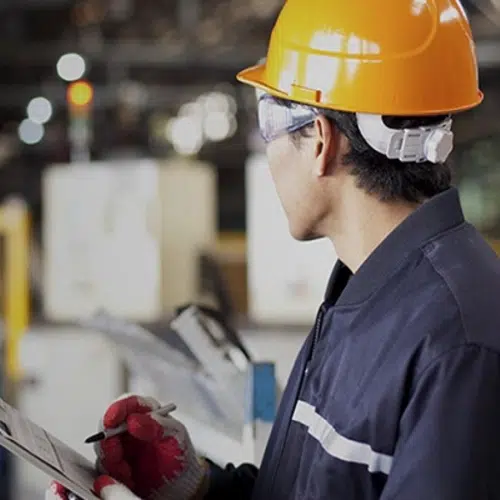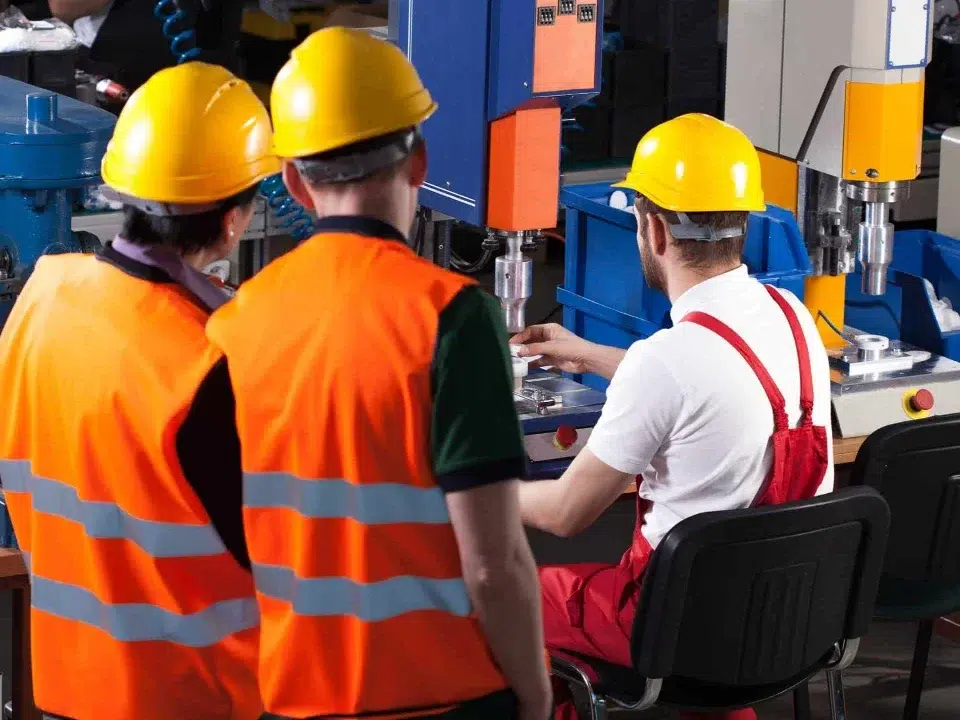A Comprehensive Guide to Developing an Effective Contractor Safety Manual: Ensuring Safety Excellence on Every Worksite
Achieving CPD Certification through BBSM Training: What It Means for Safety Professionals
July 26, 2023
How to Conduct a Contractor Safety Audit to Protect Your Workers and Business
July 26, 2023In this article, we delve into the essential components of an effective contractor safety manual, a crucial resource for any organization serious about maintaining safety excellence on every worksite. As the importance of safety regulations continues to grow, it is imperative that contractors understand their role in promoting a secure work environment. By exploring the key elements and best practices of developing a comprehensive safety manual, we aim to equip readers with the knowledge and tools needed to ensure the well-being of workers and the overall success of their projects. Get ready to dive deep into the world of contractor safety and unlock the path to safety excellence.
Introduction
As individuals, we all value our safety and well-being in every aspect of life. This notion holds particularly true in the realm of work, where employers have a responsibility to ensure the safety of their employees. However, when it comes to contractor safety, an additional layer of complexity arises. The presence of contractors on worksites introduces new challenges that must be addressed diligently and comprehensively. In this comprehensive guide, we will delve into the critical aspects of developing an effective contractor safety manual that ensures safety excellence on every worksite. Whether you are a project manager, a contractor, or an employer seeking to enhance your organization’s safety standards, this article will provide you with invaluable insights and practical steps to achieve your goals
The Importance of a Contractor Safety Manual
A well-crafted and comprehensive contractor safety manual forms the cornerstone of a safety-focused work environment, ensuring the well-being of all individuals involved in construction projects. Within its hallowed pages lie the guidelines and procedures that safeguard workers from potential hazards, ensuring that safety is prioritized above all else. By meticulously outlining the necessary precautions, this manual serves as a steadfast guardian, protecting contractors from accidents and mishaps that could otherwise befall them.
Furthermore, by putting forth stringent safety standards through a unified document, organizations demonstrate their unwavering commitment to worker welfare. This not only instills confidence in contractors but also attracts top talent who seek out employers who prioritize their well-being. A robust contractor safety manual thus becomes an instrumental tool in maintaining strong employer-employee relationships built on trust and shared values – the foundation for success in any endeavor.
Key Components of an Effective Contractor Safety Manual
A crucial aspect of developing an effective contractor safety manual lies in understanding the key components that ensure comprehensive safety coverage on every worksite. These components serve as the building blocks for a robust safety program that not only meets regulatory requirements but also instills a culture of safety among contractors and workers alike.
1. Safety Policies and Procedures: The foundation of any contractor safety manual lies in its well-defined and clearly communicated safety policies and procedures. These policies should cover a wide range of topics, including hazard identification, incident reporting, emergency response protocols, personal protective equipment (PPE) usage, and safe work practices specific to each worksite. By setting out these guidelines concisely, contractors can understand their responsibilities and expectations when it comes to maintaining a safe working environment.
2. Risk Assessment Methods: Another crucial component is the inclusion of comprehensive risk assessment methods within the contractor safety manual. This involves identifying potential hazards present at the worksite and evaluating their likelihood and severity. Risk assessment methods may include conducting site inspections, analyzing previous incident reports, involving contractors in hazard identification processes, using checklists or forms to document risks, and implementing mitigation strategies accordingly. By integrating thorough risk assessment techniques into the manual, contractors can proactively identify potential dangers before they lead to accidents or injuries.
3. Training Programs: A well-designed training program is vital for ensuring that all contractors are equipped with relevant knowledge and skills to perform their tasks safely and efficiently. The contractor safety manual should outline specific training requirements based on job roles as well as provide resources for delivering effective training sessions. These programs may cover topics such as job-specific hazards, proper use of equipment, emergency response procedures, ergonomics awareness, or even mental health support
Conducting a Risk Assessment for Contractor Safety
Conducting a thorough risk assessment is a crucial step towards ensuring the safety of contractors on every worksite. This process involves identifying potential hazards, evaluating the associated risks, and implementing appropriate control measures to mitigate those risks. By undertaking a comprehensive risk assessment, organizations can proactively address safety concerns and create a secure working environment for all personnel involved. During the risk assessment process, it is essential to consider various factors that could pose potential dangers. These may include physical hazards such as falls, electrical shocks, or exposure to harmful substances. Additionally, environmental conditions like extreme weather or unstable ground must be taken into account. By meticulously examining each aspect of the worksite, organizations can uncover potential risks that might have otherwise been overlooked.
Furthermore, an effective risk assessment requires active involvement from all stakeholders – including contractors themselves. Engaging in open dialogue with contractors enables better understanding of their specific requirements and challenges in order to implement suitable safety measures. Collaborative risk assessments not only enhance communication but also foster a sense of ownership and responsibility among all parties involved. Ultimately, by conducting comprehensive risk assessments and involving contractors throughout the process, organizations can ensure that safety remains paramount in every aspect of their operations.
Ensuring Compliance with Safety Regulations and Standards
Adhering to safety regulations and standards is paramount in maintaining a secure work environment for contractors. By strictly following these guidelines, not only do organizations demonstrate a commitment to the well-being of their personnel, but they also mitigate potential legal and financial risks. It is essential to stay well-informed about the latest safety regulations relevant to the industry, as they are regularly updated to reflect emerging best practices. By doing so, organizations can proactively address any potential gaps in their contractor safety management system.
A comprehensive approach to compliance involves conducting regular audits and inspections to ensure that safety protocols are being effectively implemented. These audits provide an opportunity for organizations to identify areas that require improvement or additional training. In addition, engaging with regulatory bodies and industry associations can foster collaborations and knowledge-sharing, enabling access to valuable resources that enhance compliance efforts.
Establishing Safety Training Programs for Contractors
Ensuring the safety of contractors on worksites requires a comprehensive approach that includes effective training programs. By providing thorough safety training, contractors can develop the knowledge and skills necessary to identify potential hazards, take appropriate precautions, and respond effectively in emergency situations. These programs should be tailored to the specific needs of the contractors and aligned with industry standards and regulations.
One key aspect of establishing safety training programs is conducting a thorough needs assessment. This involves identifying the specific risks and challenges faced by contractors in their respective roles. Understanding these unique requirements enables organizations to design targeted training modules that address these concerns directly. From basic safety protocols to job-specific procedures, such programs should equip contractors with the necessary tools to navigate hazards confidently.
Implementing Effective Communication Strategies for Contractor Safety
Clear and concise communication is paramount in ensuring contractor safety on worksites. With the diverse nature of construction projects, effective communication becomes even more crucial to prevent accidents and maintain a safe working environment. Implementing robust strategies can bridge the gap between contractors, subcontractors, and project managers, fostering a shared commitment to safety.One essential communication strategy is establishing regular safety meetings where all stakeholders come together to discuss potential hazards, provide updates on safety protocols, and address any concerns. These meetings serve as platforms for collaboration and encourage open dialogue, creating an environment where everyone feels comfortable expressing their thoughts on enhancing safety practices.
Furthermore, utilizing technology tools such as mobile apps or instant messaging platforms can streamline communication channels between contractors and project managers. By leveraging these technological advancements, real-time information sharing becomes effortless. Contractors can report hazards or incidents promptly while project managers can promptly disseminate critical safety alerts or changes in procedures. This digital connectivity promotes efficiency while reinforcing a culture of safety awareness among all involved parties.
Remember, effective communication not only facilitates accident prevention but also enhances overall productivity on worksites. When contractors feel heard and valued by the project management team, they are more likely to actively engage in implementing safety measures without compromising efficiency. By prioritizing clear and continuous communication throughout the construction process, we foster a collaborative atmosphere that ensures every worker’s well-being while achieving success in meeting project goals.
With Best Wishes
Sanjeev Kumar Paruthi
Director & CEO
TSM TheSafetyMaster® Private Limited
Unit No 221-451-452, SPL1/J, 2nd & 4th Floor, Sunsquare Plaza Complex, RIICO Chowk, Bhiwadi 301019, Rajasthan, India
Phone: +91 1493 22 0093
Mobile: +91 7665231743/9413882016
Email: info@thesafetymaster.com



